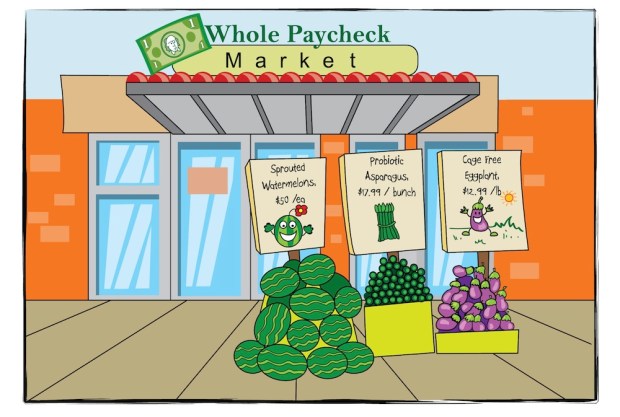Whole Foods Split Earnings Result

It was a good news/bad news earnings report for the much scrutinized Whole Foods market yesterday (May 4). The organic grocery chain managed to beat on earnings, but missed on revenue.
Whole Foods put up adjusted earnings of 44 cents a share on revenues of $3.70 billion — slightly better than the 41 cents a share being forecast, but also slightly below the $3.74 billion in revenue prediction.
“We produced record sales and operating cash flow, and returned $144 million of capital to our shareholders. Through our improved cost structure and expense disciplines, we delivered strong EBITDA in a challenging sales environment,” John Mackey, co-founder and co-CEO of Whole Foods, said in a statement.
The street, by and large, liked the result at first, with a stock pick-up of around 5 percent, though some of those gains were returned in after hours.
There were some troubling spots in the report – the street’s favorite metric, same-store sales, fell by 3 percent in Q1, worse than the 2 percent forecasted ahead of time. The firm also adjusted earnings expectations down for the rest of the year some, with a prediction that they will “be at or below the low end of prior sales and earnings per share ranges, reflecting recent sales trends and additional investments in marketing and technology in the second half of the year.”
Once the most beloved name in organic retail, Whole Foods has been beset with merchandise scandals and an ever increasing influx of competitors offering organic products and prices far below the “whole paycheck” levels that the upscale grocery has become known for. Share price has fallen 40 percent in the last year, as the firm has struggled with perceptions of being overpriced and overhyped.
In response to those critiques — and a changing market space — Whole Foods has introduced the 365 Markets, a store concept that hopes to meld the Whole Food quality standard with more affordable prices. The move has been hailed by some, but others have logged criticism that Whole Foods runs the risk of competing with itself.
“We believe there is customer demand for both formats, and as a second growth vehicle, 365 allows us to attack the value-quality proposition in a new way, while maintaining the integrity the Whole Foods Market brand represents in the marketplace,” he said.
